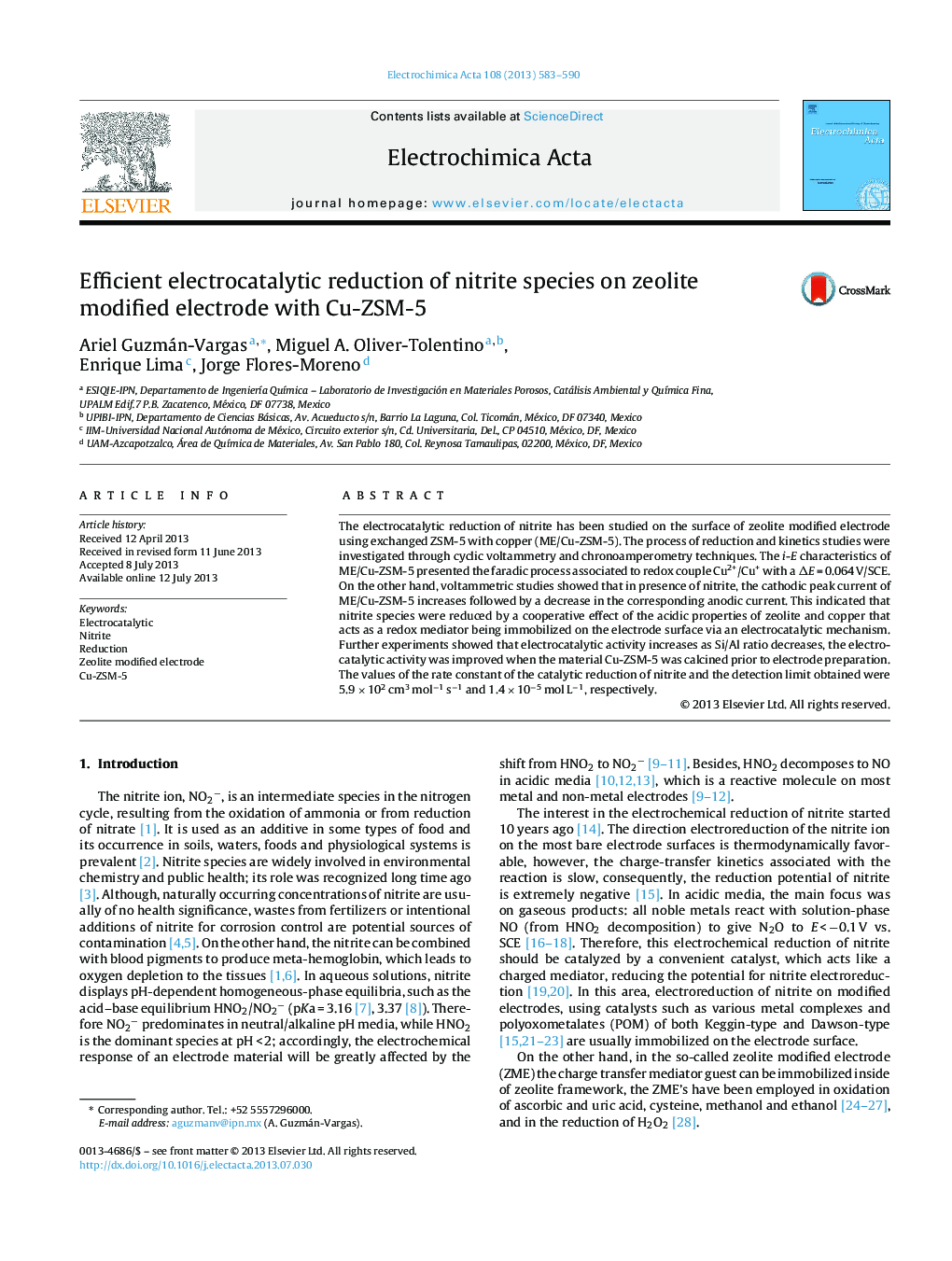| Article ID | Journal | Published Year | Pages | File Type |
|---|---|---|---|---|
| 186841 | Electrochimica Acta | 2013 | 8 Pages |
•Cu-ZSM-5 was immobilized on glassy carbon electrode obtained so-called ZME.•The redox couple Cu2+/Cu+ acts like charge mediator in the reduction of nitrite.•The copper inside of zeolite framework show high catalytic activity toward nitrite reduction.•The acidity necessary for the electrochemical reduction of nitrite was provided by the zeolite.
The electrocatalytic reduction of nitrite has been studied on the surface of zeolite modified electrode using exchanged ZSM-5 with copper (ME/Cu-ZSM-5). The process of reduction and kinetics studies were investigated through cyclic voltammetry and chronoamperometry techniques. The i-E characteristics of ME/Cu-ZSM-5 presented the faradic process associated to redox couple Cu2+/Cu+ with a ΔE = 0.064 V/SCE. On the other hand, voltammetric studies showed that in presence of nitrite, the cathodic peak current of ME/Cu-ZSM-5 increases followed by a decrease in the corresponding anodic current. This indicated that nitrite species were reduced by a cooperative effect of the acidic properties of zeolite and copper that acts as a redox mediator being immobilized on the electrode surface via an electrocatalytic mechanism. Further experiments showed that electrocatalytic activity increases as Si/Al ratio decreases, the electrocatalytic activity was improved when the material Cu-ZSM-5 was calcined prior to electrode preparation. The values of the rate constant of the catalytic reduction of nitrite and the detection limit obtained were 5.9 × 102 cm3 mol−1 s−1 and 1.4 × 10−5 mol L−1, respectively.
Graphical abstractFigure optionsDownload full-size imageDownload as PowerPoint slide
